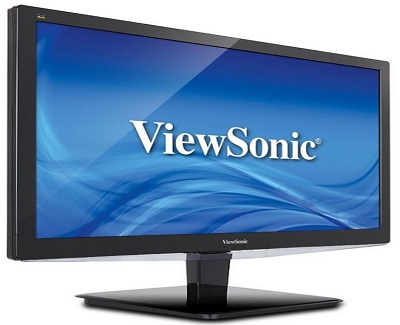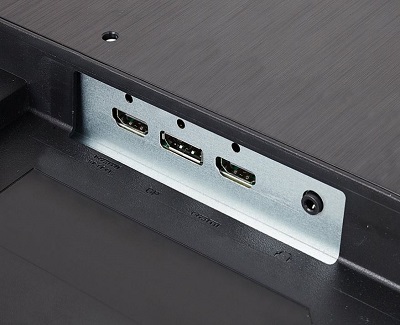There’s no particular reason why a computer monitor should match the resolution of a TV picture. But at around the same time the television industry began the move to 4K resolution (also known as UltraHD) the computer industry introduced the idea of Retina or HiDPI displays. And just as4Koffered twice there solution across and down as the previous standard (1080p), HiDPI screens doubled the number of pixels. So there was a natural fit, and, leaving aside Apple’s decision to trump everyone with its 5K iMac, we’re now seeing lots of 4K monitors. What they give you, apart from the chance to watch incredibly sharp TV programs (once someone gets round to making them) is an incredibly sharp display. Of course, the first ones were also incredibly expensive –but that’s changed. Here’s the first one we’ve seen for under $500.
Getting the price down this far is even more impressive when you consider just how many pixels we’re talking about. At 3840×2160, the VX2475 illuminates more than eight million individual dots of light, 60 times a second. In our test images, the only thing we couldn’t see was where ViewSonic had cut any corners. This a terrific display, with some of the most vibrant colors and deepest blacks we’ve seen from a monitor in ages. A wide range of colors was faithfully represented, with the brightest blues and more fluorescent greens popping out of the screen. The intense backlight helps to kick everything up a notch. There’s no super-glossy finish here. Instead, the VX2475 is matt, cutting out reflections and ensuring you can work without distraction in a brightly litroom, not just when you turn the lights out to watch a film.

There is one catch: at 24inches, this is one of the smallest 4Kmonitors. On the plus side, with 184dots per inch, everything look amazingly sharp. It also means every dot is extremely small. If you use a Mac, that’s not a problem, because Apple’s OSX operating system (and most major programs) helpfully resizes windows, text labels and other visual elements to a legible size, while displaying your work and media in full resolution. Windows–even several years into the HiDPI era–isn’t so good at this.

You can change how it scales objects. For example, when a window that would take up 400x400pixels on a normal monitor still occupies 400x400pixels (making it physically four times smaller), you would normally increase Windows’ display scaling to 200percent, making everything the same size again. But not all programs respond well to this, and it still isn’t as smart as Apple’s method. While ViewSonic hasn’t skimped on the panel itself, the rest of the monitor is basic. The frame looks fairly cheap, with black glossy plastic. There’s also no rotation or height adjustment; you just have to tilt the screen backwards and forwards slightly.

Video inputs are limited to two HDMI ports and one Mac-style Display Port. Remember to make sure your PC’s video output supports 4K. There’s little advantage to playing games at UltraHD resolutions on this size screen –you won’t really see the extra detail, and unless your graphics card is top of the range, you’ll end up turning quality settings down to show all those pixels. Nor is this the display for graphics pros. But if you want to watch 4Kvideo from your new camcorder or see your DSLR photos in detail, or you have a Mac and want the best desktop OSX can show you, theVX2475 is an absolute bargain.
